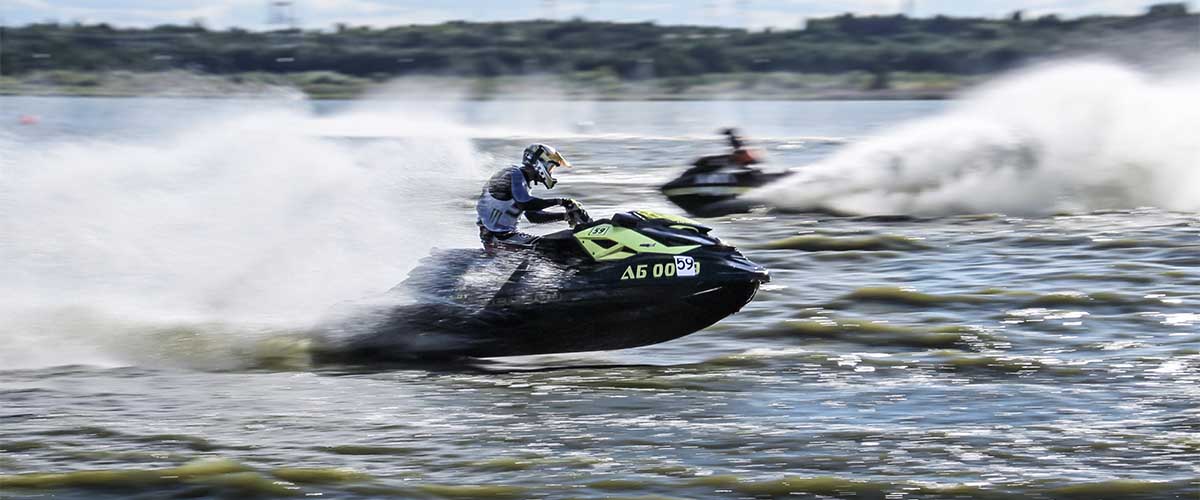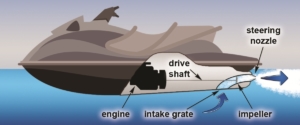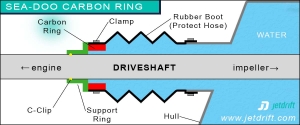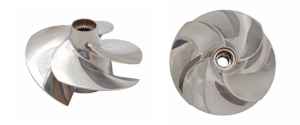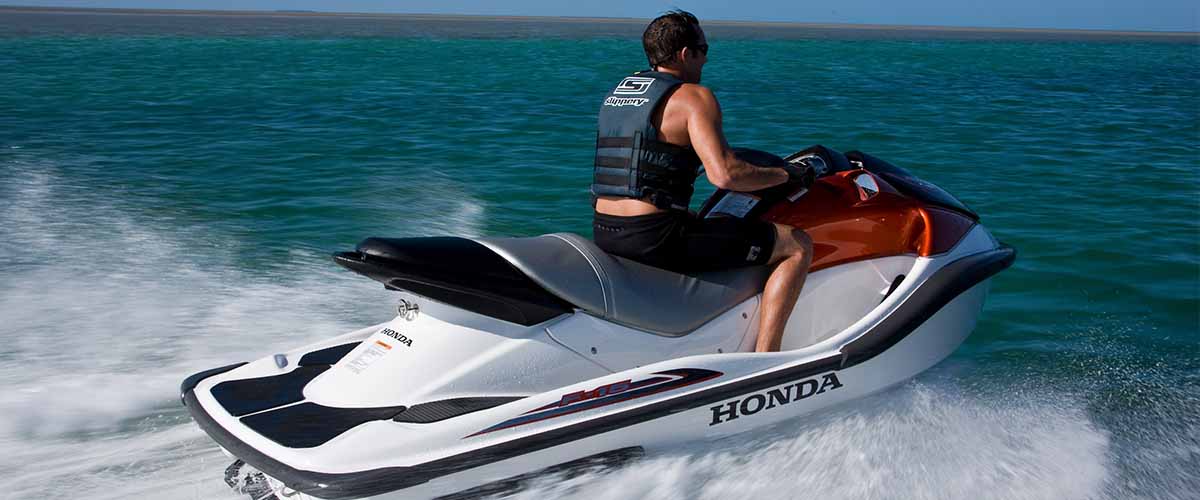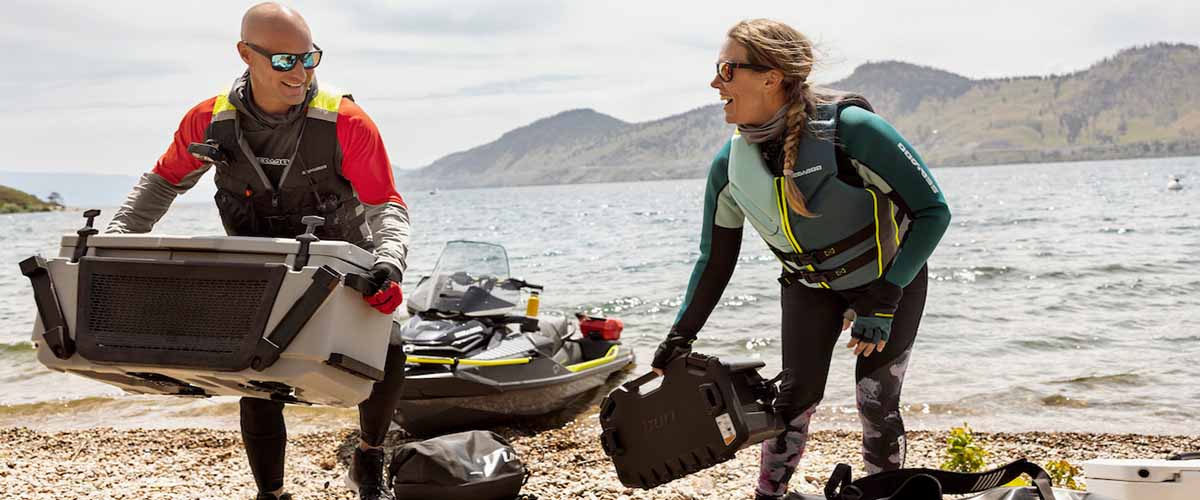What is Cavitation in a Jet Ski? How to Fix It? [Video]
Cavitation on a jet ski is a phenomenon in which the water starts boiling around the impeller due to an extreme loss of pressure in the pump. This undesirable malfunction robs engine power and can damage the impeller, wear ring, or pump housing. What’s more, in extreme cases it can cause the engine to overheat!
If you want to know more about cavitation (and how to eliminate it), keep reading.
We at JetDrift have compiled all you need to know under one roof!
What is Cavitation in a Jet Ski?
As a rule of thumb, each jet ski is propelled by a jet pump that features a metal impeller.
As the blades of this impeller turn, pressure differences occur between the sides. This is because on the sides that are pushed against the water, pressure increases.
In contrast, pressure drops on the other sides of the blades, which results in a water flow. The faster the impeller spins, the lower the pressure drops, which results in a faster water flow.
But the boiling point of the water depends on the pressure, and the lower the pressure, the easier it is for water to boil. (This is the reason why water boils at a lower temperature in higher elevations above sea level.)
If the pressure drops too low around the impeller, the water starts boiling. This phenomenon is often referred to as “cavitation” on jet skis.
In most cases, this low-pressure zone is limited to just around the blades. When the bubbles move away from the impeller, they return to the normal pressure and go back to liquid.
However, in extreme cases, the impeller can make a “hole” around itself in the water. And the more power the jet ski has, the more water it boils around itself.
This is the reason why cavitation is a common problem on today’s high-performance jet skis!
What Does Cavitation Feel Like on a Jet Ski?
Without further ado, the most common jet ski cavitation symptoms are as follows:
- Noise and vibration from the pump
- Slipping feeling when accelerating
- Lower top speed
- Engine overheating
It’s safe to say that the most common symptom of cavitation is excessive noise from the pump. Since gas needs more space than water, the bubbles pop, resulting in a lot of noise and shockwaves.
Cavitation also robs a lot of engine power since the impeller is virtually running in a “hole,” which leads to poor water flow and thrust. As you can imagine, it translates to slower acceleration and lower top speeds.
In the worst-case scenario, excessive cavitation can cause the engine to overheat.
Is Cavitation Bad for a Jet Ski?
Unfortunately, cavitation is an undesired phenomenon on jet skis, as it can damage the impeller, the pump, and even the engine in many ways. The most common types of damage caused by cavitation are as follows:
- Impeller damage (break, erosion)
- Damaged wear ring
- Damaged pump surface
- Engine overheating
When it comes to jet skis, the potential risk of cavitation is often overlooked. However, only a little cavitation can eat the entire impeller in the long run!
This is because the little bubbles virtually bite small pieces from the surface of the impeller and even the pump internals. The powerful shockwaves caused by the cavitation put a lot of stress on the impeller; in extreme cases, they can break the blades.
And the softer the impeller, the faster this erosion ruins its blades. This is why aluminum impellers are not really durable enough.
To avoid these issues, it’s good to know what causes a jet ski to cavitate and how to prevent these issues!
What Would Cause a Jet Ski to Cavitate?
As a rule of thumb, the most common reason why a jet ski cavitates is improper flow in the pump. Various malfunctions can cause this improper flow, but the most common ones are as follows:
- Debris or seaweed in the pump
- Damaged impeller
- Wrong impeller clearance
- Wrong sized or damaged wear ring
- Damaged intake grate, pump shoe, ride plate
- Broken carbon seal
- Air leaks caused by broken sealant
Let’s drill into the details and talk about how to fix these issues!
How do You Fix Cavitation on a Jet Ski?
If you feel that cavitation frequently occurs on your jet ski, here are the best steps for eliminating it:
- Clear the pump and the intake
- Inspect the impeller, wear ring, and fix/replace them if needed
- Check the pump housing, pump shoe, and the intake grate
- Make sure that the impeller clearance meets factory specifications
- Inspect the carbon ring
- Check the other sealants
It’s safe to say that cavitation on a jet ski is typically caused by debris in the pump or the intake. Put the ski on the trailer and carefully check the intake.
If the problem persists, it’s time to pull out the impeller. Unfortunately, if your ski has a brake/reverse system, it means you have to remove the reverse gate first.
Once you’ve removed the impeller, inspect it thoroughly. Dents, cracks, nicks, or other types of damage can easily cause cavitation.
If your impeller is in mint condition, you should look at the other internals, namely the drive shaft, wear ring (if featured), intake grate, and pump housing. It’s a lesser-known fact that even an improper or bent intake grate can result in cavitation issues.
Also, ensure that the impeller fits perfectly in the pump and that its clearance meets the factory’s specifications.
When it comes to Sea-Doos, the carbon seal is often overlooked. However, a broken or worn carbon seal can cause air leaks in the pump, resulting in cavitation. What’s more, a damaged ring can even lead to a sunken Sea-Doo!
Finally, air leaks may occur due to broken sealant in the pump.
Depending on the make and the design of your ski, you can find some fittings on the pump that belong to specific systems. (Like the cooling system, bailer, etc.) Make sure that there are no air leaks around these fittings.
Takeaways
Cavitation on a jet ski means that the water starts boiling around its impeller due to improper water flow in the pump. This results in a lot of noise, vibration, and decreased power.
Since cavitation can damage the jet ski in many ways (eroded impeller and pump internals, engine overheating), it’s recommended that you fix your ski if you notice any signs of cavitation.
To eliminate cavitation on your jet ski, ensure that the pump is clear and the impeller and pump internals are in mint condition. Also, don’t forget to inspect the wear ring and the sealants, as air leaks often contribute to these issues!
DISCOVER 2024 PWC MODELS Kawasaki, Sea-Doo, Yamaha, Krash…
